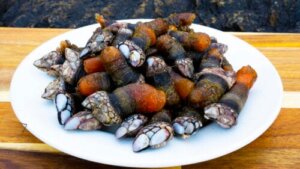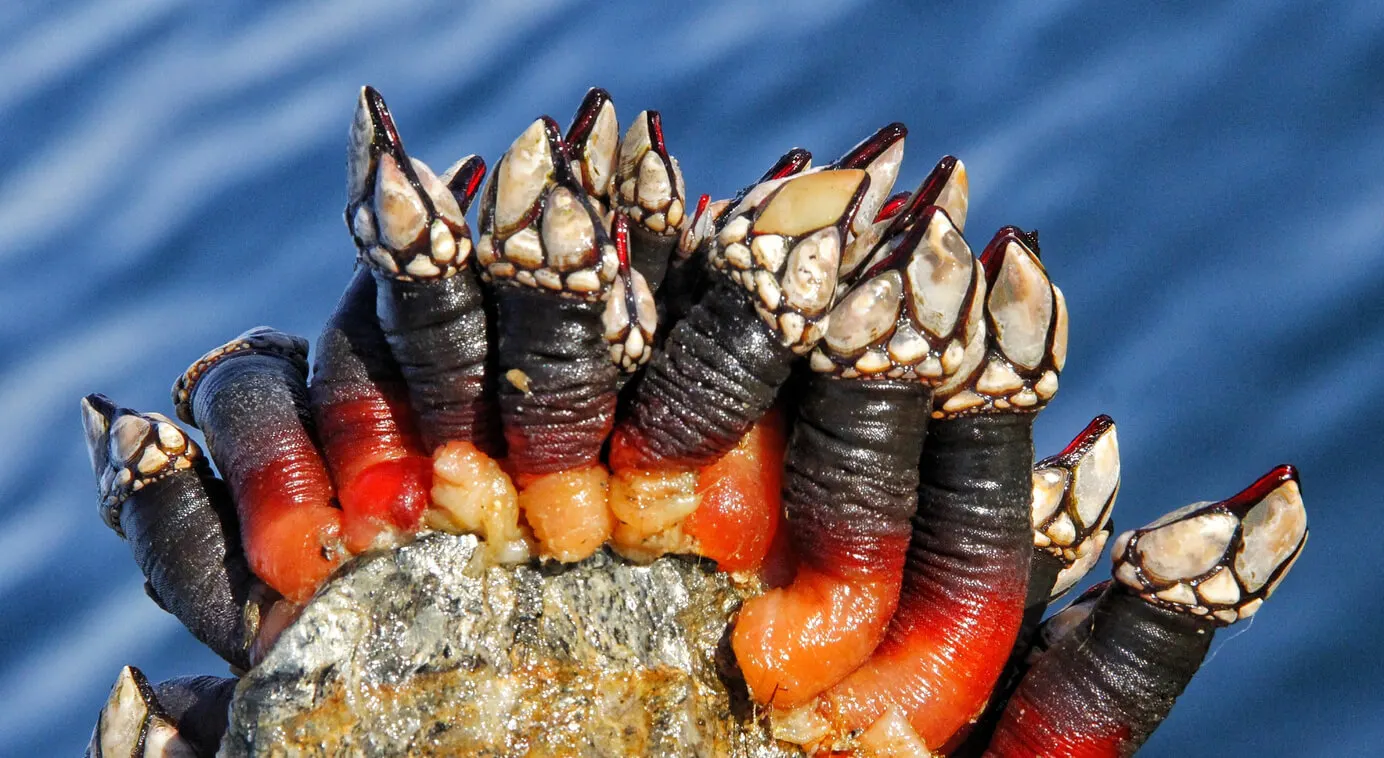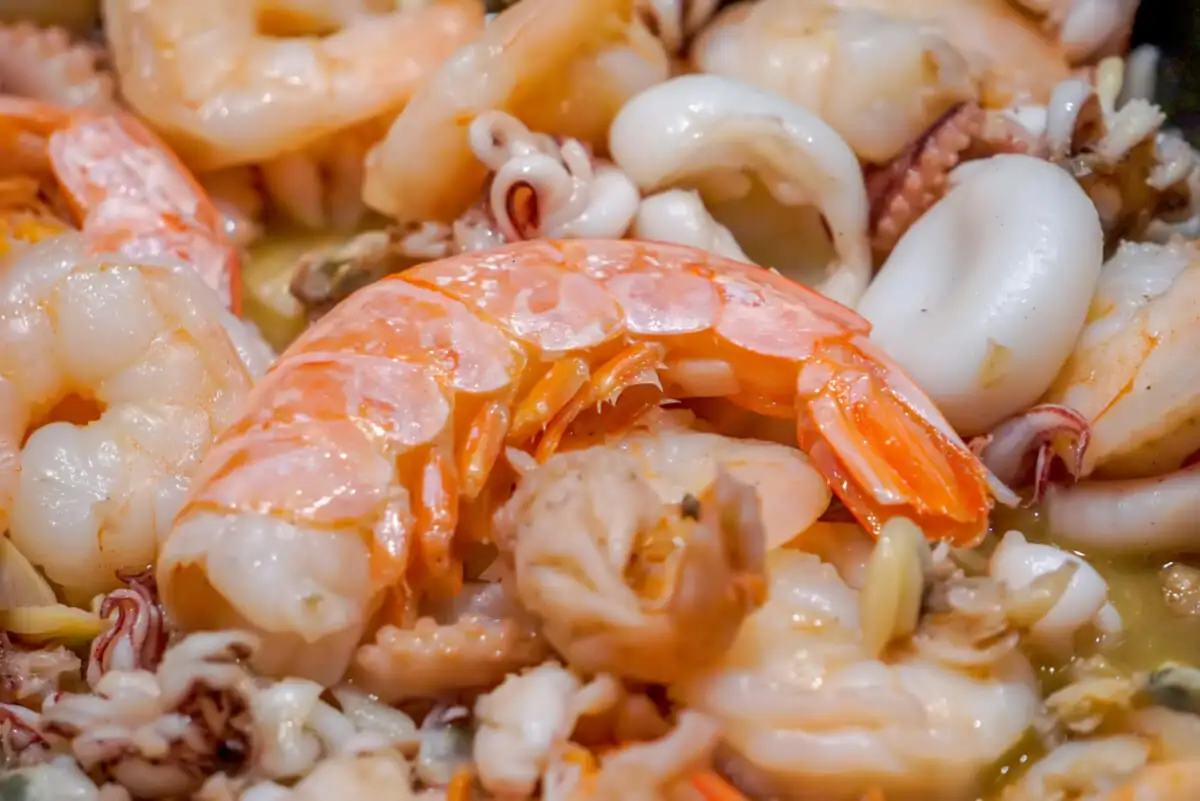Nutritional Value and Benefits of Barnacles


Written and verified by the nutritionist Maria Patricia Pinero Corredor
Barnacles are marine crustaceans that are known for their ability to cling to rocks and for having no limbs. Eating them may seem like a strange idea, but you’d be surprised not only by their delicious taste, but also by their health benefits. Find out all about the benefits of barnacles in this article!
These invertebrate animals inhabit nearly all of the world’s oceans, with some 1220 species found around the globe. Although they’re spread all over the planet, it’s in Spain, France, and Portugal where they’re most in demand.
Here’s everything you need to know about barnacles.
What nutrients do barnacles offer?
Barnacles are crustaceans that live attached to rocks and are filter feeders. They have a hoof shape, with two parts, which are the head and the peduncle.
The head has two calcium plates. The peduncle is the lower fleshy area protected by strong black skin.
Barnacles belong to the family Pollicipedidae and their species is Mitella pollicipes. They aren’t very mobile and feed on zooplankton particles in the water. They usually live in areas with a lot of waves, since the liquid there is more oxygenated and they use the cirrus they have to breathe and eat.
There are a dozen species that are used for human consumption. They’re harvested by hand, so it takes time and that makes them rather expensive.
Apart from their high price, they also have a high nutritional value. They’re high in protein, low in fat, and have high levels of minerals.
The Spanish Ministry of Food gives us the following information regarding their nutrients per 100 grams (4 oz) of product:
- Calories: 59 kcal
- Proteins: 13,6 g
- Fat: 0,5 g
- Carbohydrates: 0 g
- Calcium: 126 mg
- Magnesium: 94 mg
- Potassium: 330 mg
- Phosphorus: 127 mg
- Selenium: 28.8 micrograms
- Iodine: 58 micrograms
- Vitamin B12: 15 micrograms

Fatty acids and proteins
Despite their low fat content, they’re characterized by containing fatty acids such as omega-3 and omega-6. It may vary depending on the barnacle species. In a report on the common species, it was found that its muscle may contain between 1.8 and 3.3% fat, of which 25% is DHA and 15% EPA (omega-3 types). Lower levels of omega-6 were found. In the common barnacle species, its protein value also stands out, reaching up to 15%.
In addition, in some varieties, zinc values tend to be very high (between 10 and 42 milligrams per 100 grams – 4 oz – of its edible part). Here we can bear in mind that, in fish and other crustaceans, zinc intake doesn’t reach 3 milligrams per 100 grams.
Read also: 5 Signs That You’re Deficient in Omega-3 and Omega-6 Fatty Acids
The health benefits of barnacles
Now we’ll examine in depth the benefits of barnacles for your health. You’ll be surprised!
1. They contain a large amount of protein
Barnacles can be recommended for their good protein content. These macronutrients are necessary for the strengthening of muscles, bones, and skin. Proteins are the main constituent of all the body’s cells in the body. Cells have a life cycle and, when they die, must be replaced. This is where protein plays its role, helping regeneration. They also have other vital functions, such as regulating biochemical reactions, repairing body tissues, and supporting the action of the immune system.
2. They don’t contain carbohydrates
Carbohydrates are substances that the body uses for energy. They’re sugar molecules that the body breaks down and transforms into glucose. However, some people can’t consume glucose because the body isn’t able to metabolize it.
Patients living with diabetes should follow a low-carbohydrate diet and barnacles are suitable for them. They’re also suitable for those who wish to follow a ketogenic diet. In it, carbohydrate intake is restricted and fat intake is increased.
3. They provide DHA and EPA
DHA is docosahexaenoic acid, which is a polyunsaturated fatty acid that belongs to the omega-3 group. Like most seafood, barnacles contain DHA. They also contain EPA or eicosapentaenoic acid.
Research now shows that DHA is an important component for the body’s membranes, including the retina and brain. Because of this, it’s recommended to improve cognitive function and learning disabilities. It also plays a key role in fetal and cardiovascular development.
DHA consumption has been linked to improved weight control and for helping in serious diseases, such as Alzheimer’s, according to some studies. The National Center For Complementary and Integrative Health claims that people who eat shellfish and crustaceans at least 4 times a week are less likely to die of heart disease.
In addition, triglyceride levels are reduced. In fact, there’s evidence to show that seafood consumption is more efficient than supplement intake.

4. They have a high mineral content
Among the benefits of barnacles is the fact that they’re high in minerals such as calcium, magnesium, potassium, selenium and phosphorus. Calcium helps to maintain healthy teeth and bones.
Magnesium regulates muscle function, blood sugar levels and blood pressure. It’s also essential for the formation of protein, bone mass and DNA.
Potassium is an electrolyte that regulates blood pressure, helps muscles contract, and maintains a steady heart rate. It allows nutrients to flow into cells and expel their wastes.
As for selenium, the body needs it in small amounts. It uses it to form antioxidant enzymes that protect against free radical damage.
Iodine, on the other hand, is necessary for the body to produce thyroid hormones. These help to regulate the body’s use of energy, control weight, body temperature, nervous system function, and muscle strength.
Read more about minerals here: Vitamins and Minerals That Help Fight Depression
How to prepare barnacles to obtain their benefits?
To start, you should cook them in boiling salted water. When they’re cooked, remove them and wrap them in a clean cloth.
When eating them, remove them from the cloth in small quantities and gently pull the head. In order to do this, hold the skin covering the edible part.
Some people put lemon, bay leaf, and other seasonings on them. However, this is optional.
The recommended amount of salt is 60 grams per liter of water, although this also depends on personal taste. Regarding the boiling time, you can leave them boiling for 1 minute if they’re large and 30 seconds if they’re medium-sized.
All cited sources were thoroughly reviewed by our team to ensure their quality, reliability, currency, and validity. The bibliography of this article was considered reliable and of academic or scientific accuracy.
- Soo Kyung Moon. Characteristics of Food Nutrition Components of Common Stalked Barnacle Pollicipes mitella. December 2016. Korean Journal of Fisheries and Aquatic Sciences 49(6):862-866. DOI:10.5657/KFAS.2016.0862
- MAPA. Percebes. 2013. https://www.mapa.gob.es/es/ministerio/servicios/informacion/percebe_tcm30-102913.pdf
- Krauss-Etschmann S, Shadid R, Campoy C, Hoster E, Demmelmair H, Jimenez M, Gil A, Rivero M, Veszpremi B, Decsi T, et al.. Effects of fish-oil and folate supplementation of pregnant women on maternal and fetal plasma concentrations of docosahexaenoic acid and eicosapentaenoic acid: a European randomized multicenter trial. Am J Clin Nutr. 2007;85:1392–400
- Quinn JF, Raman R, Thomas RG, Yurko-Mauro K, Nelson EB, Van Dyck C, Galvin JE, Emond J, Jack CR Jr, Weiner M, et al.. Docosahexaenoic acid supplementation and cognitive decline in Alzheimer disease: a randomized trial. JAMA. 2010;304:1903–11.
- Danielle Swanson, Robert Block, and Shaker A. Mousa. Omega-3 Fatty Acids EPA and DHA: Health Benefits Throughout Life. Adv Nutr. 2012 Jan; 3(1): 1–7. Published online 2012 Jan 5. doi: 10.3945/an.111.000893
- Kwak SM, Myung S-K, Lee YJ, et al. Efficacy of omega-3 fatty acid supplements (eicosapentaenoic acid and docosahexaenoic acid) in the secondary prevention of cardiovascular disease: a meta-analysis of randomized, double-blind, placebo-controlled trials. Archives of Internal Medicine. 2012;172(9):686-694.
- D. Craig Hopp, Ph.D., and David Shurtleff, Ph.D., NCCIH. Omega-3 Supplements: In Depth. NHI. 2018. https://www.nccih.nih.gov/health/omega3-supplements-in-depth
This text is provided for informational purposes only and does not replace consultation with a professional. If in doubt, consult your specialist.








